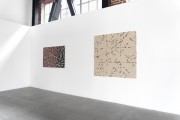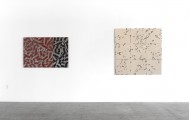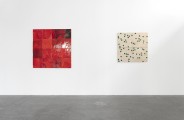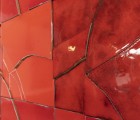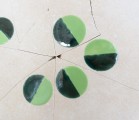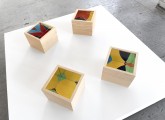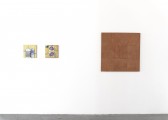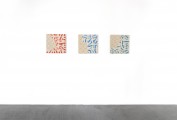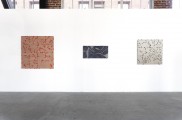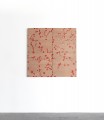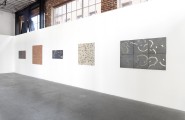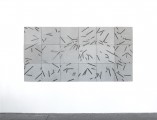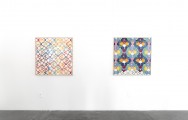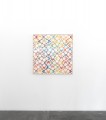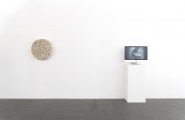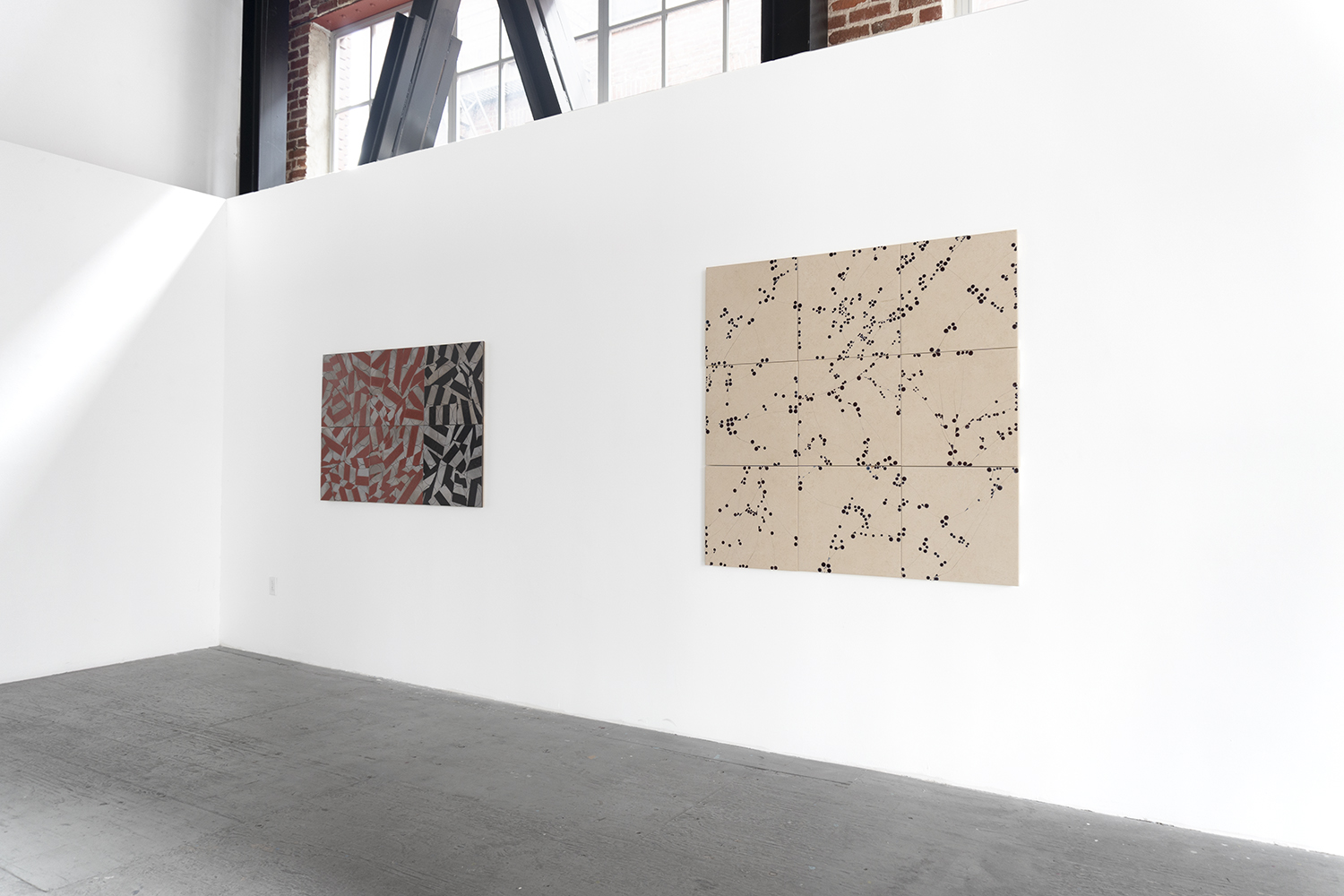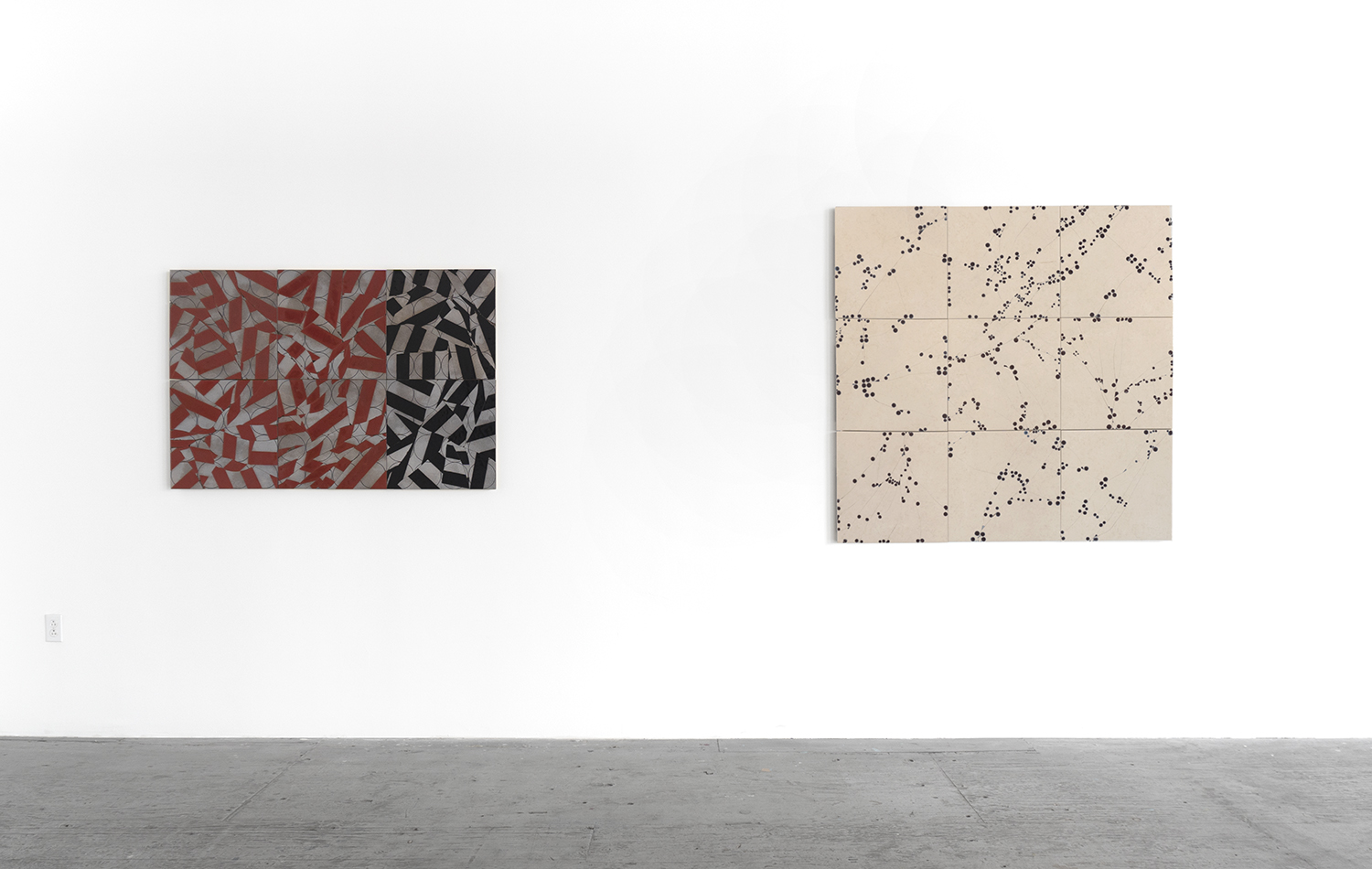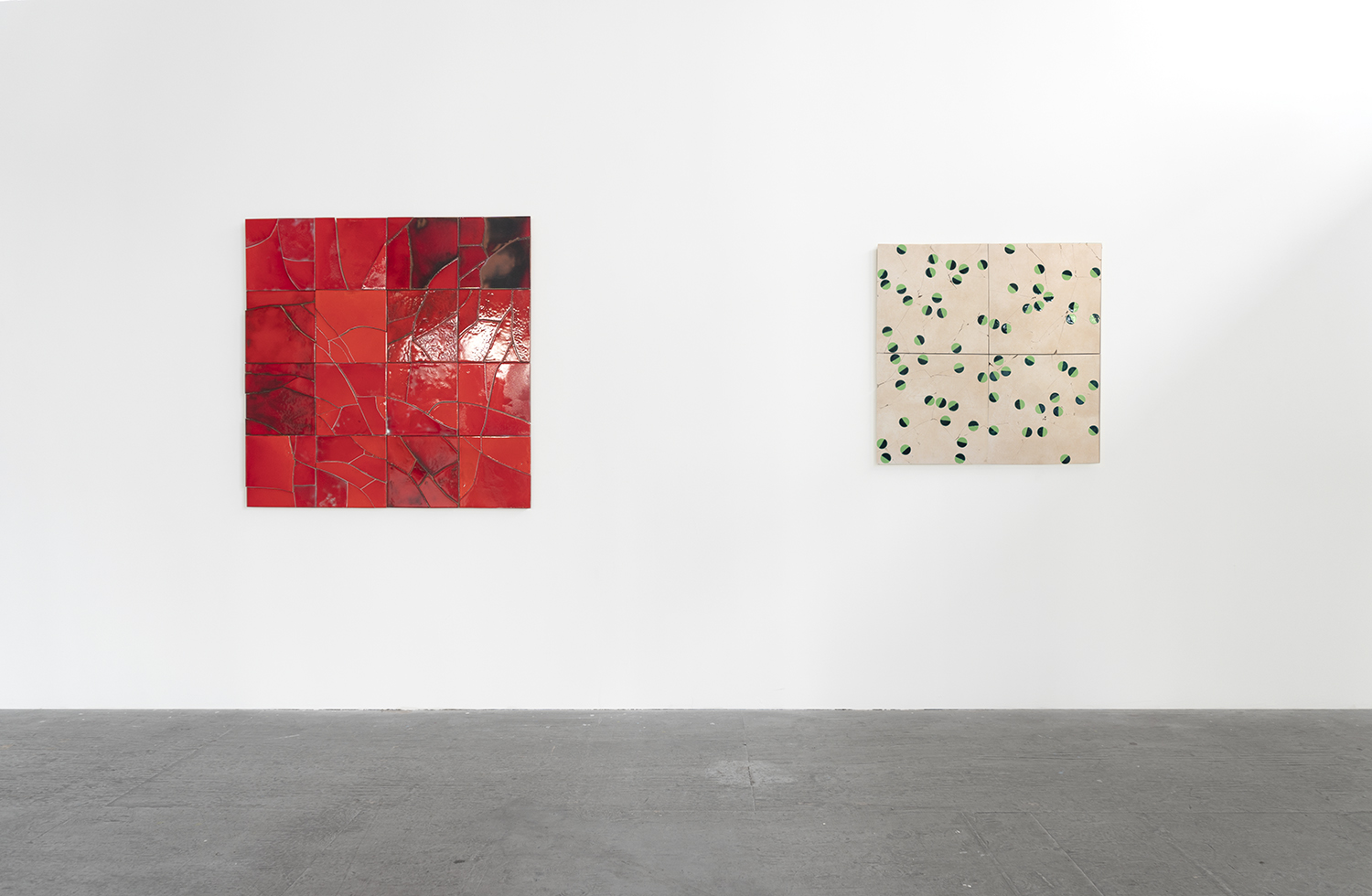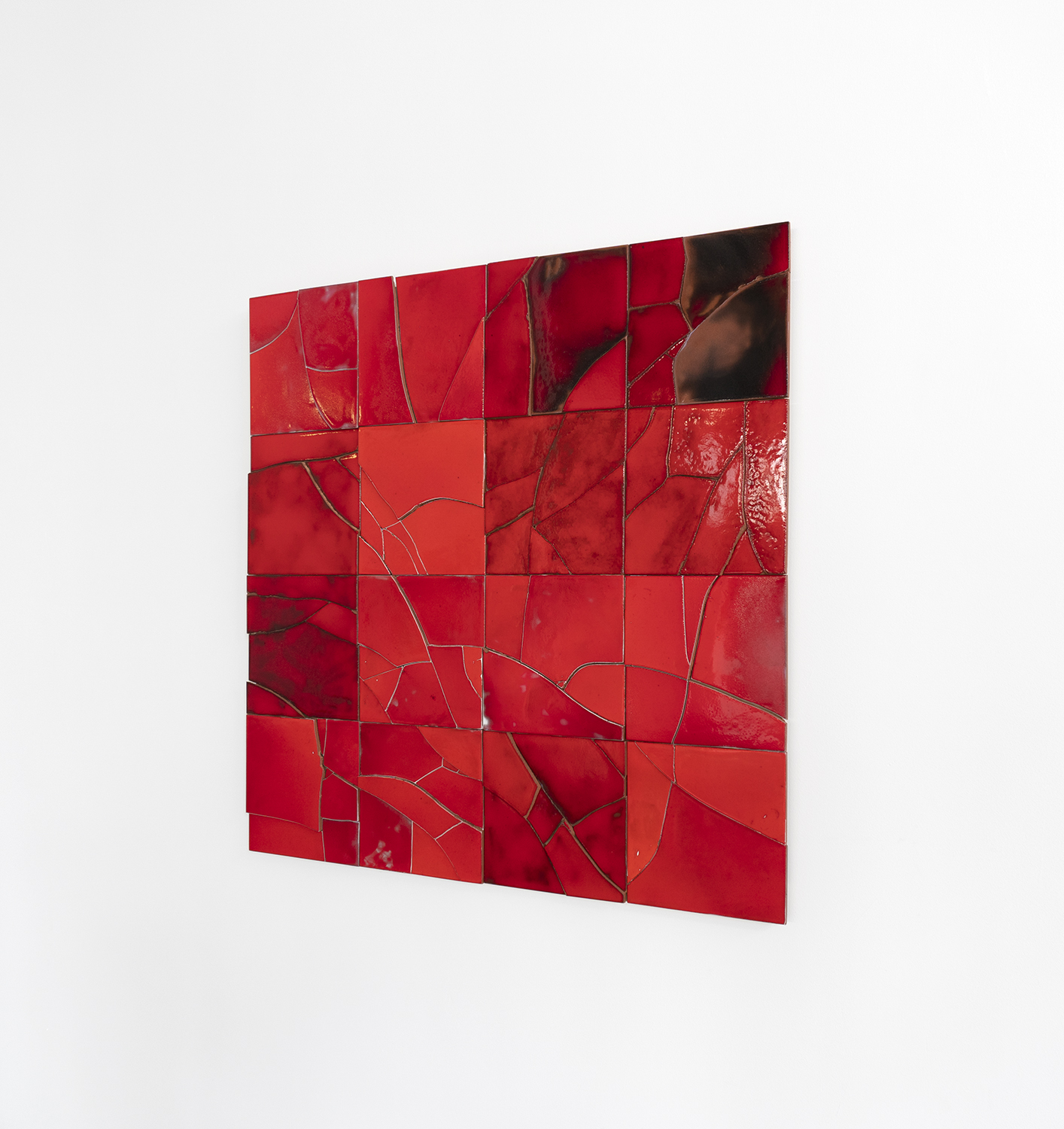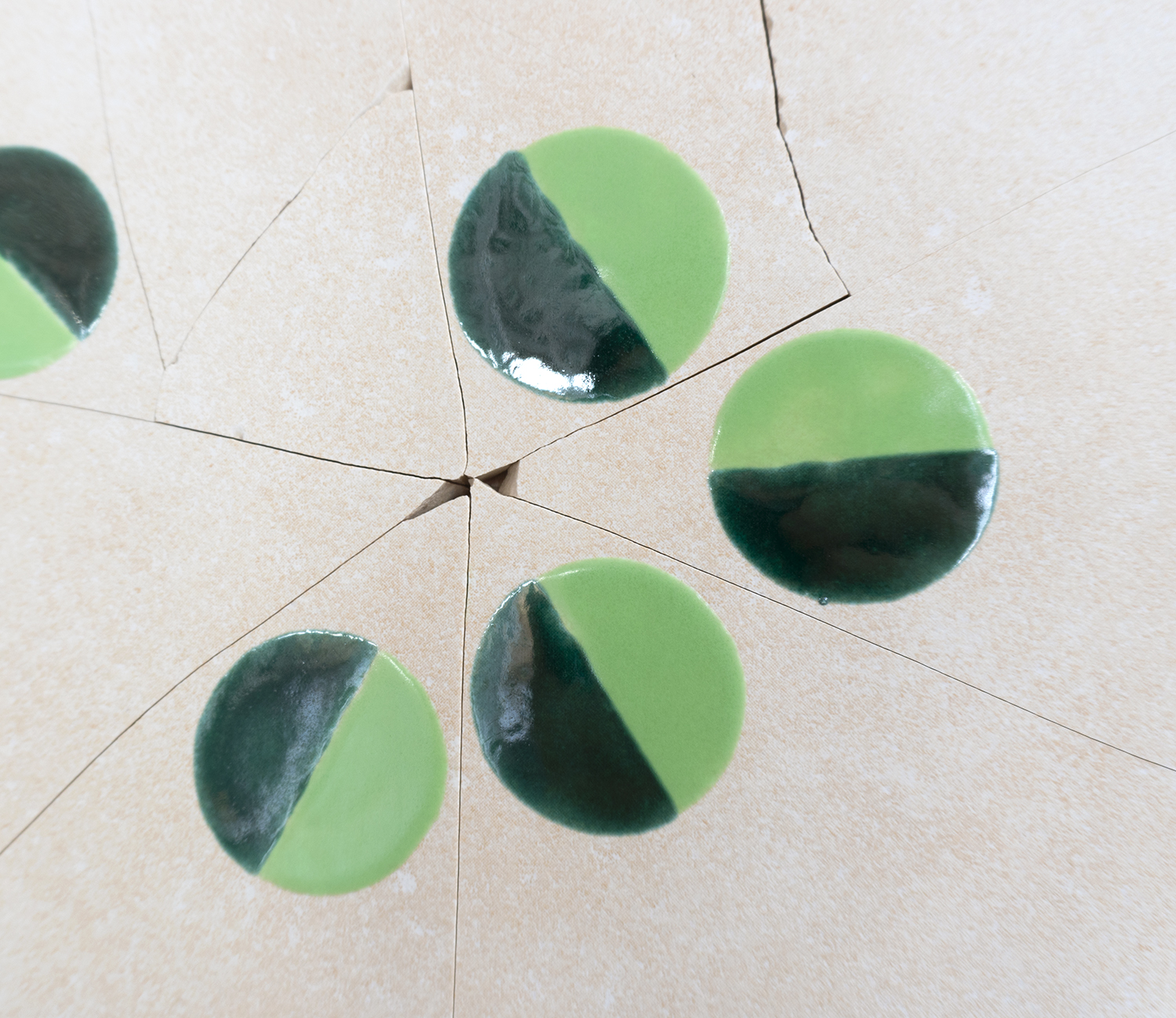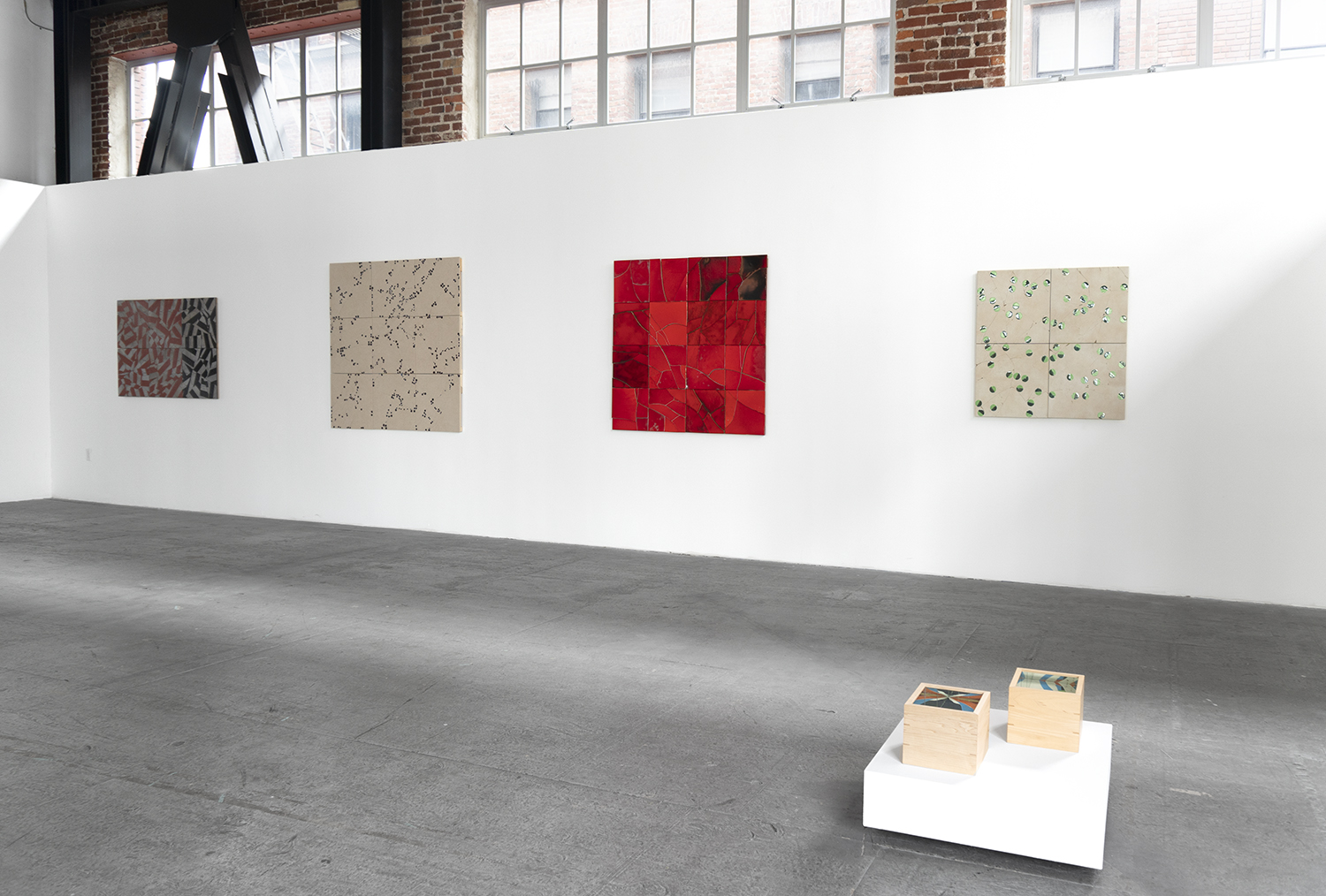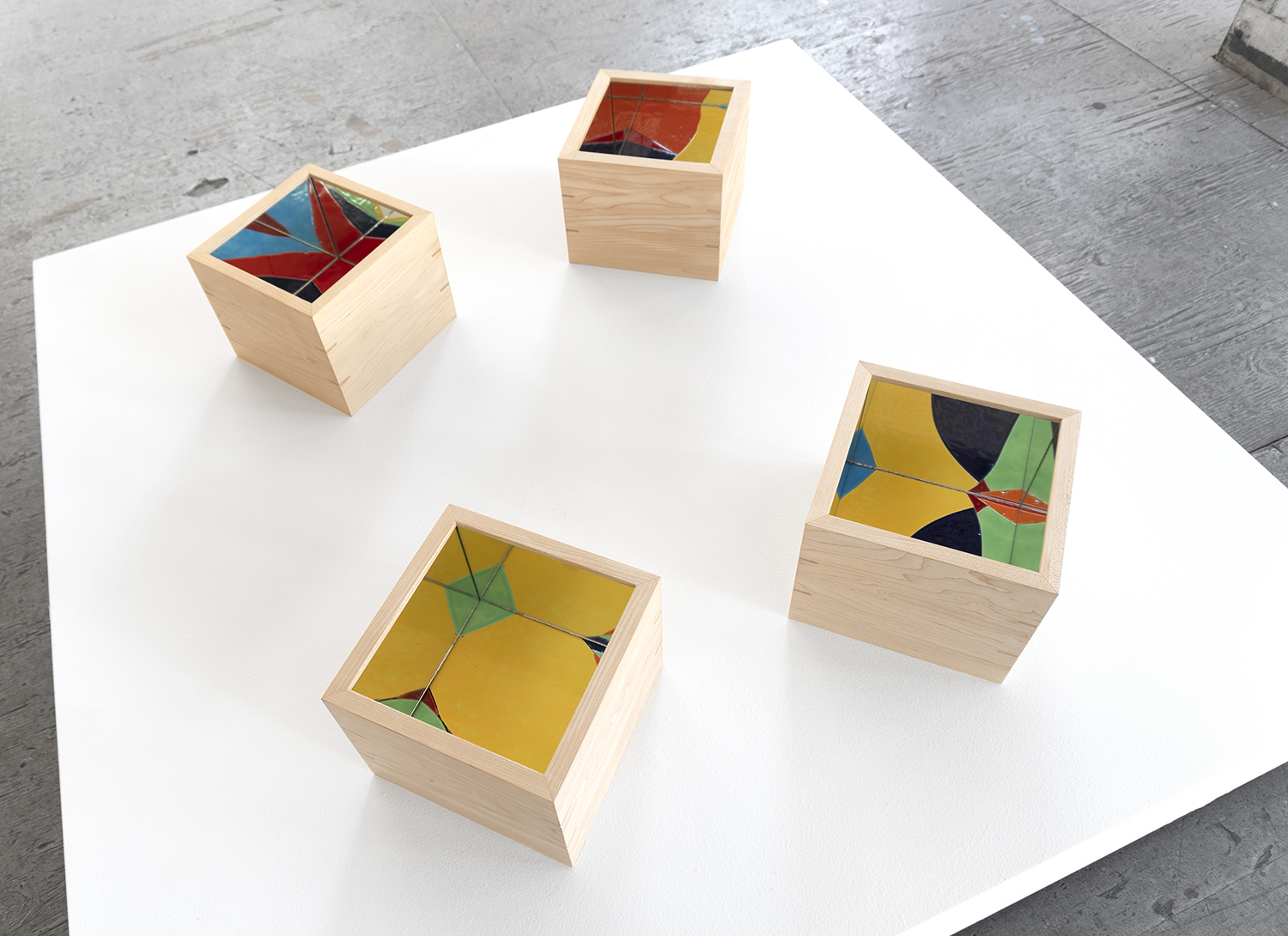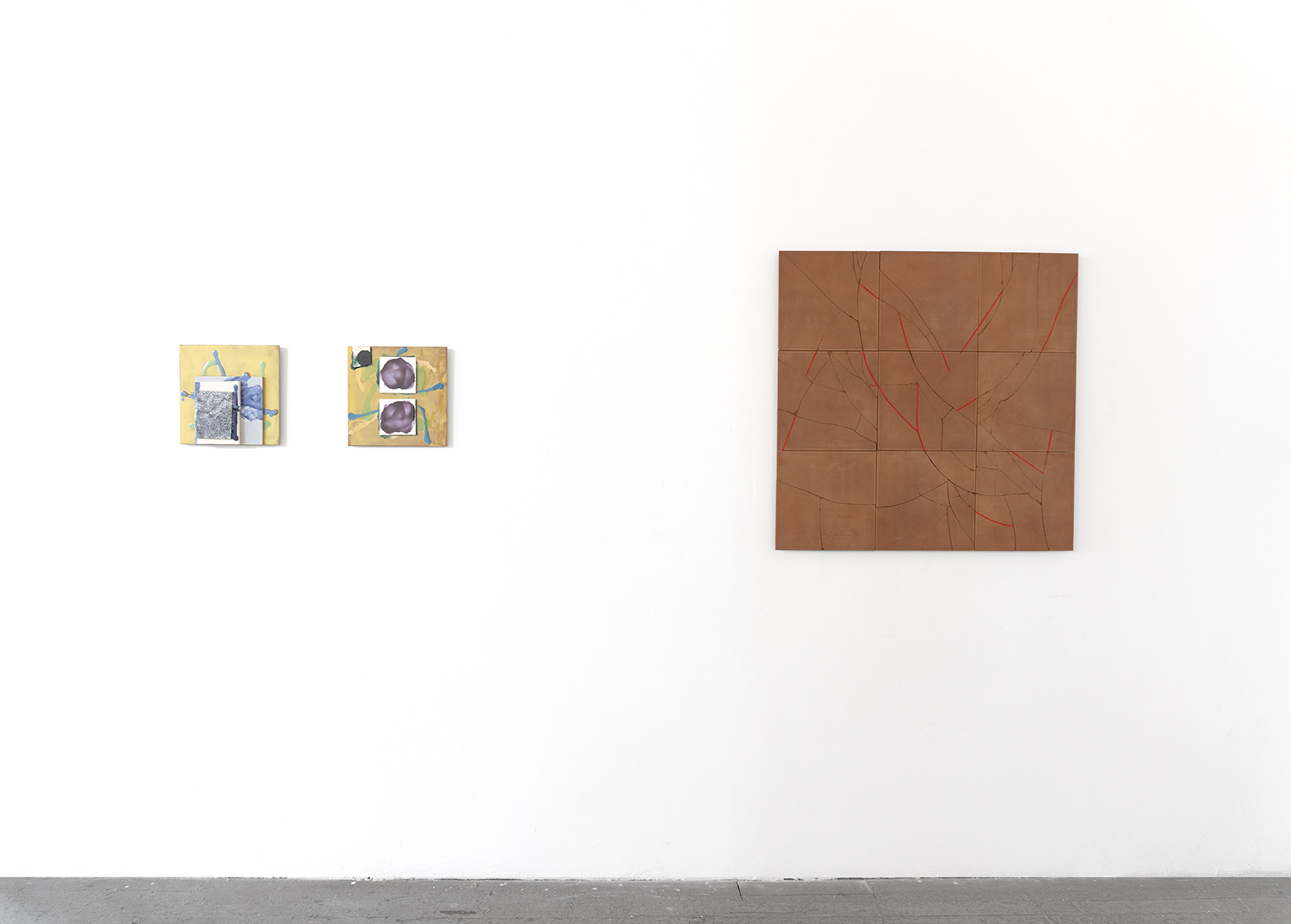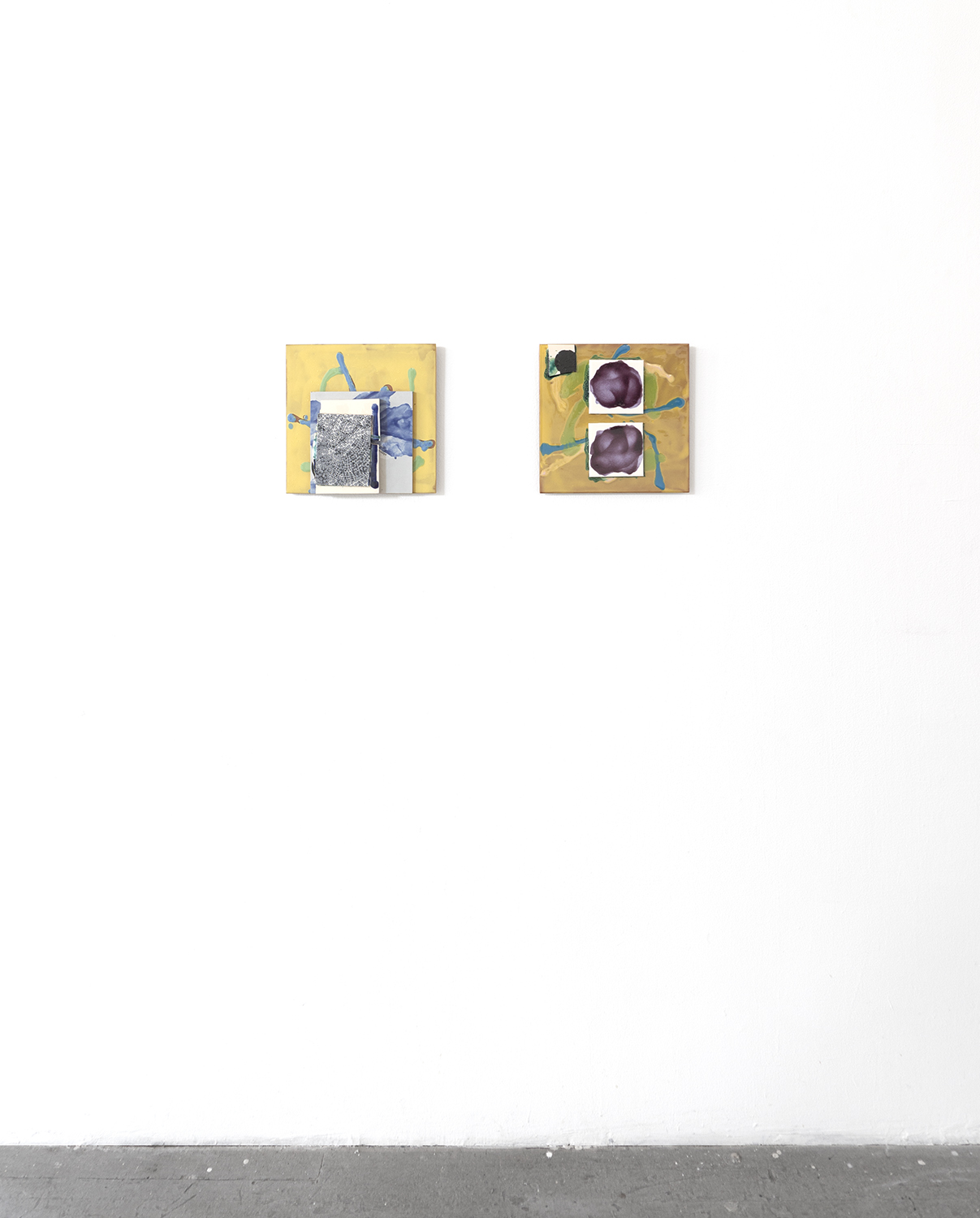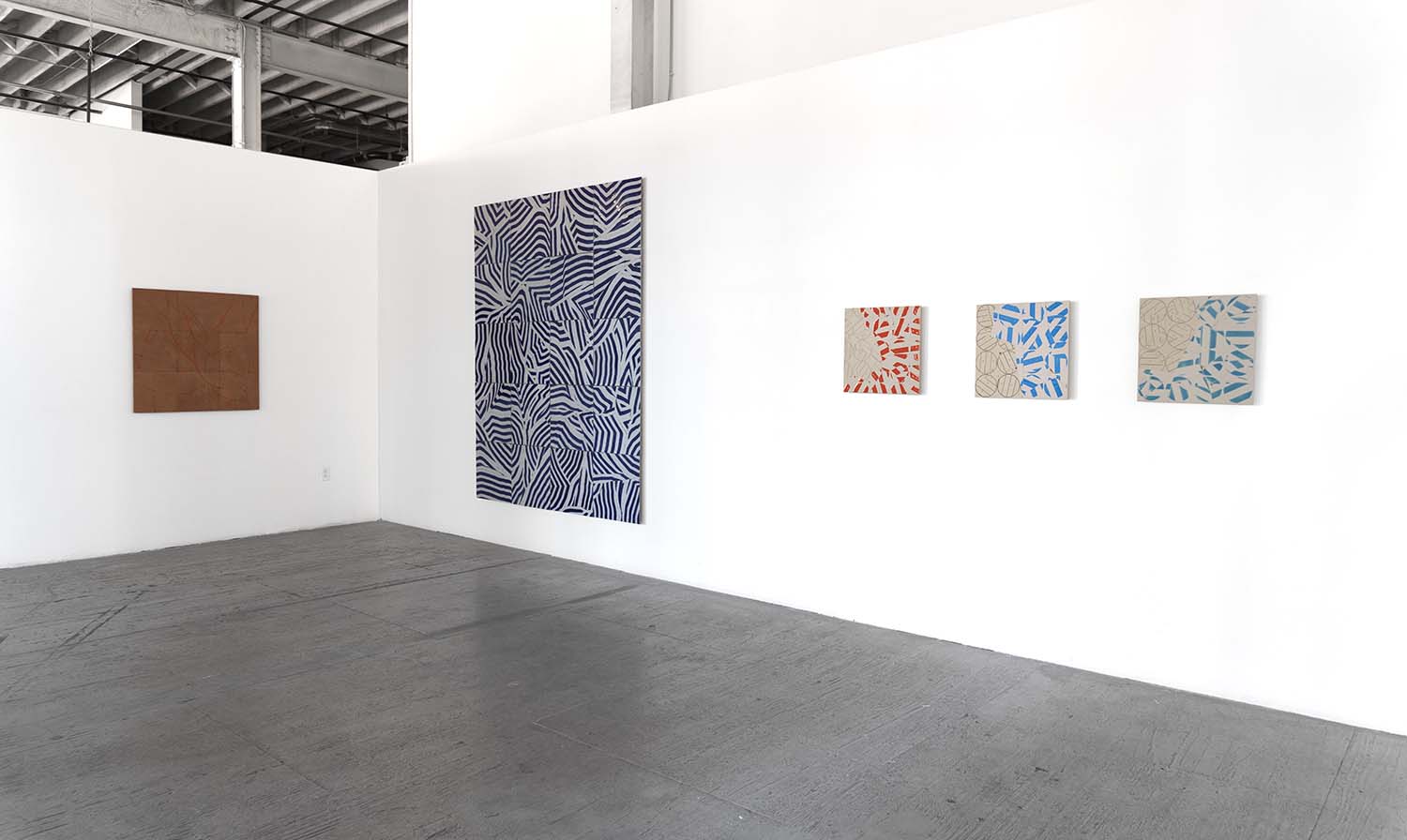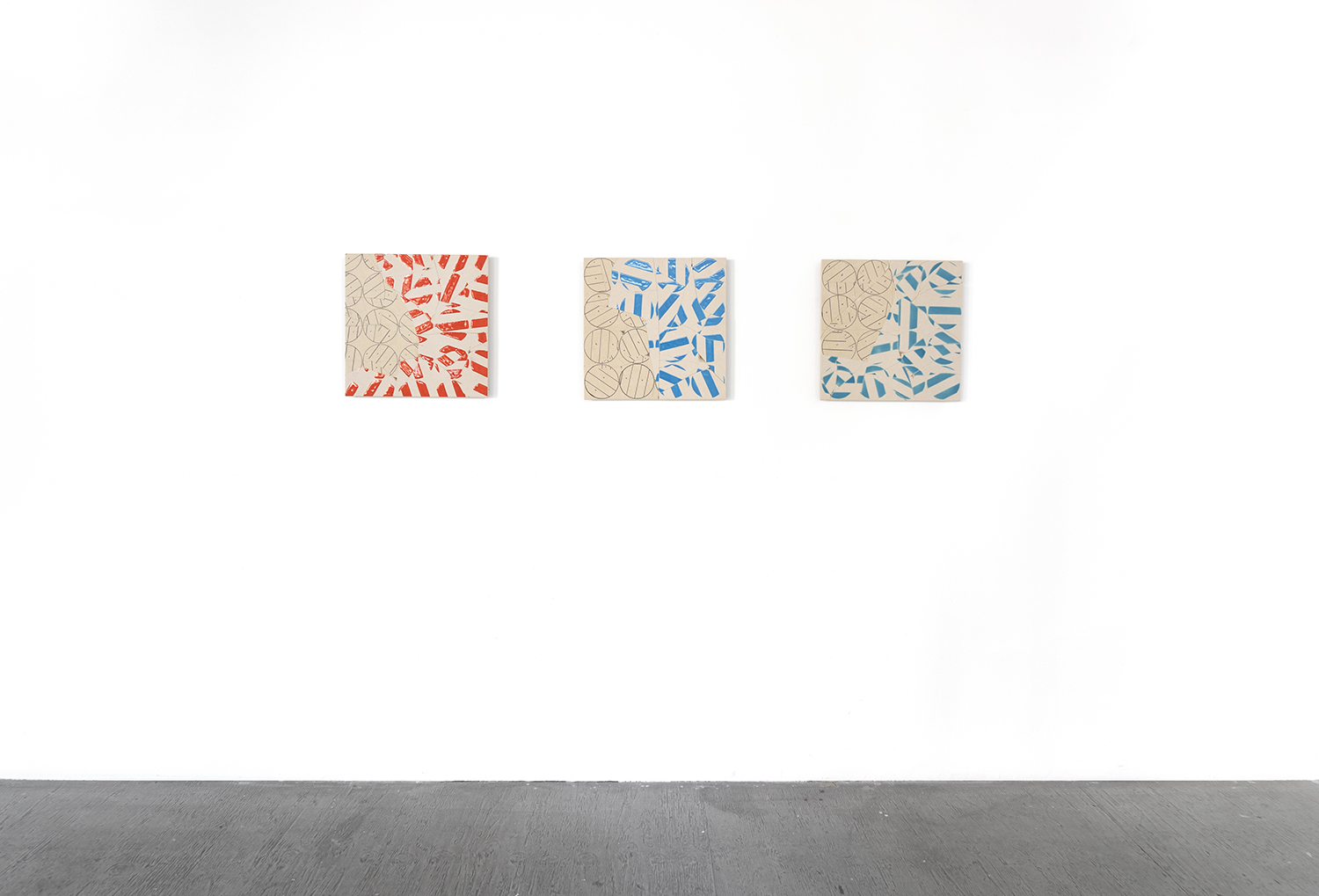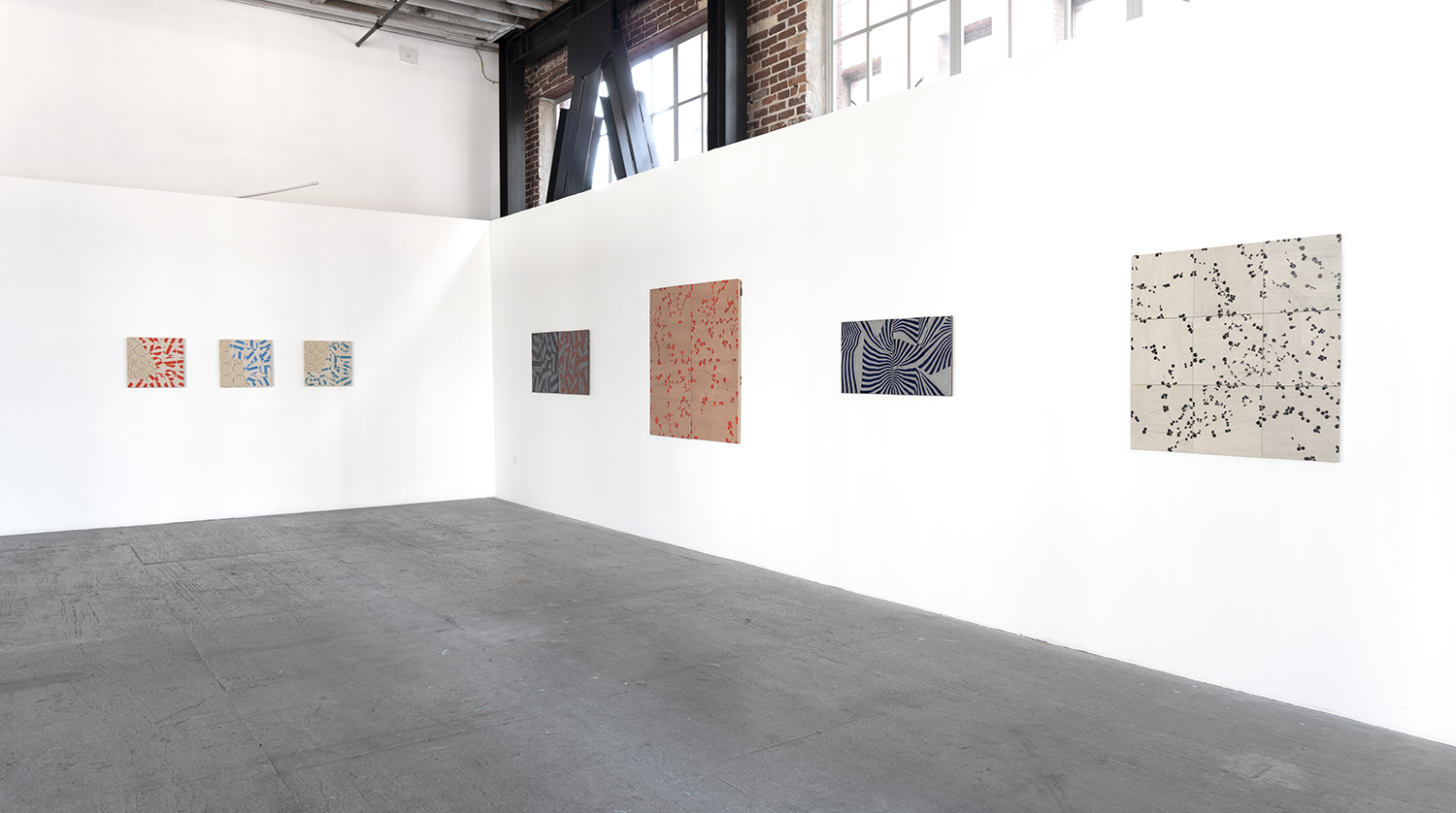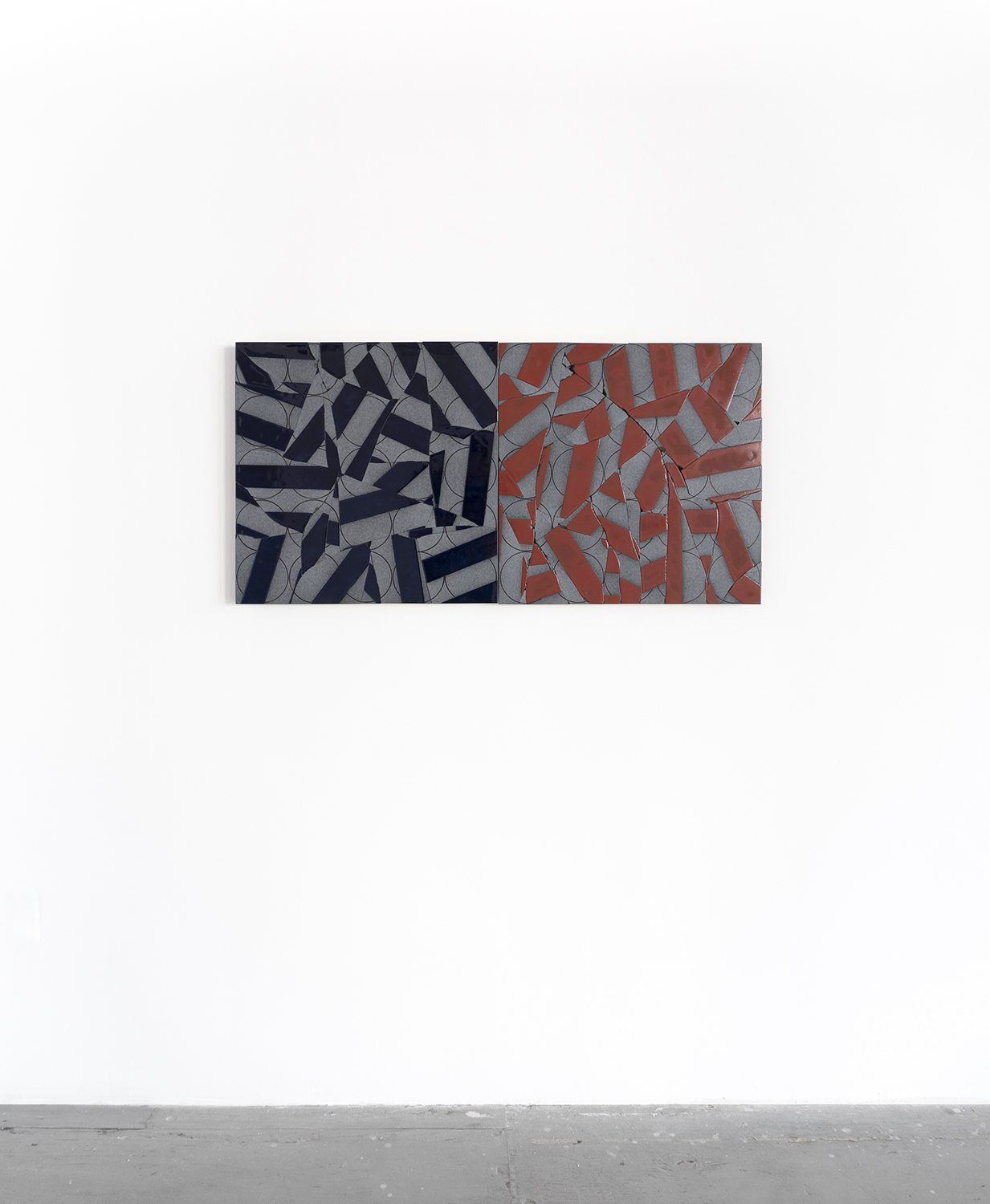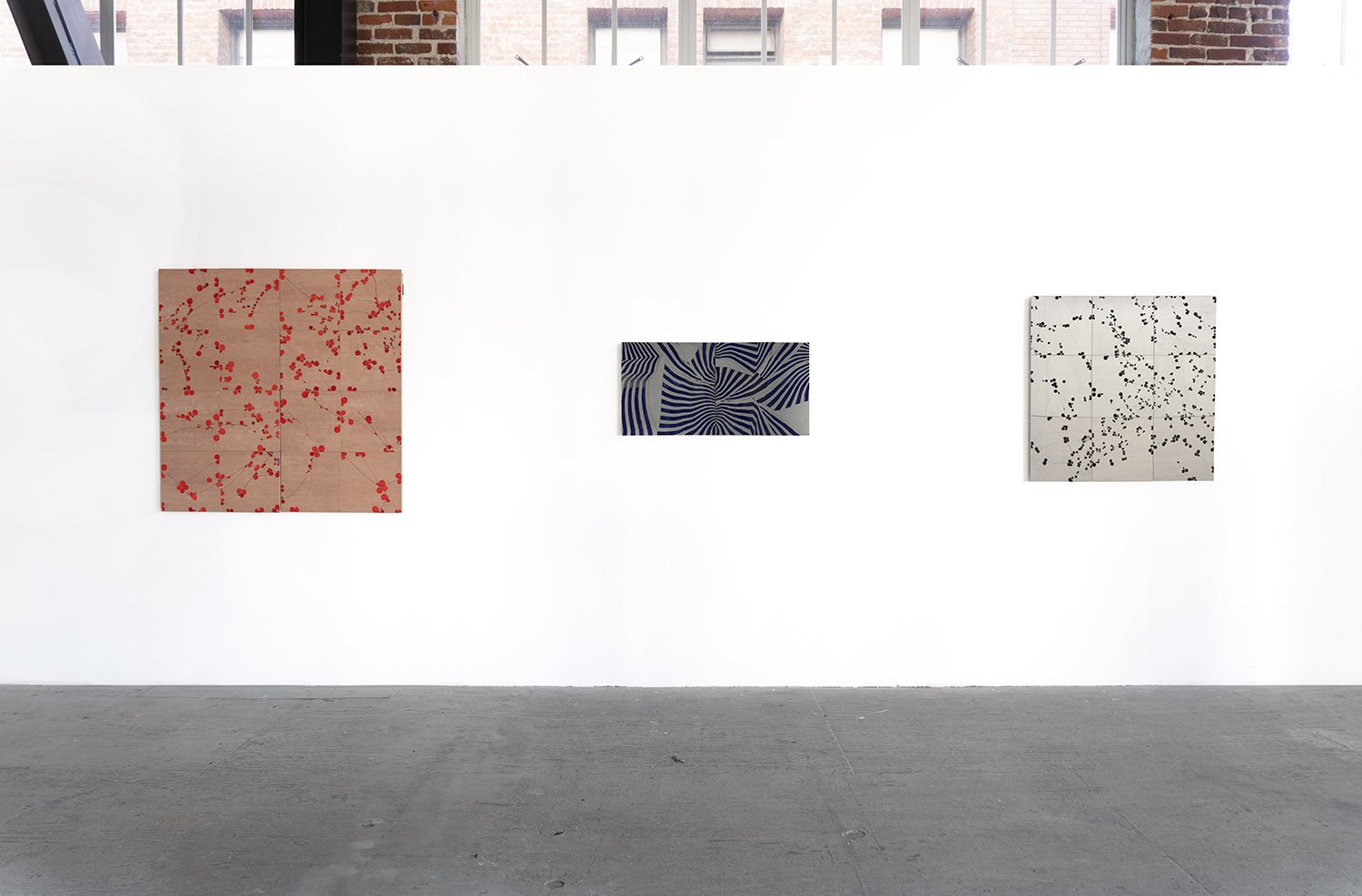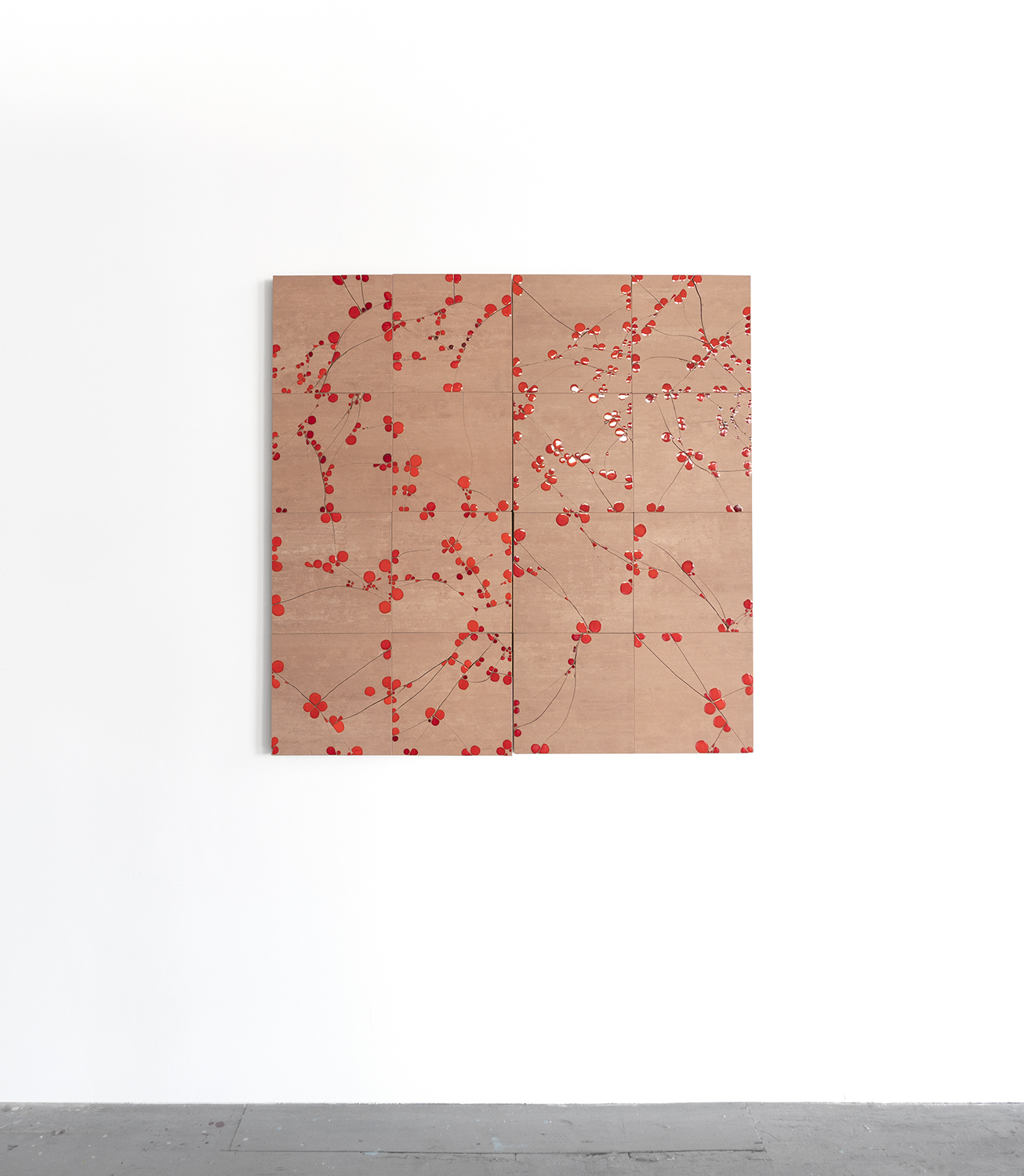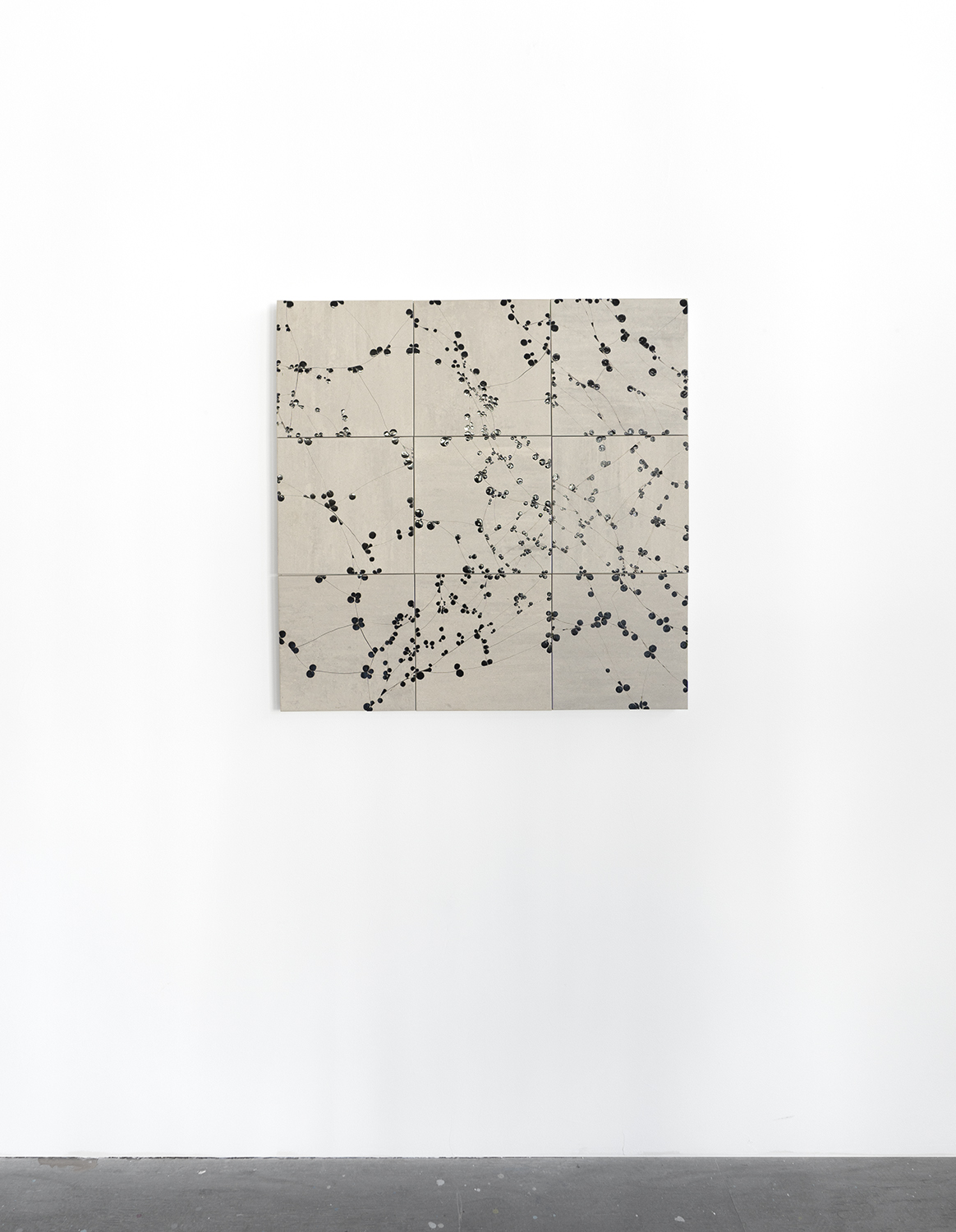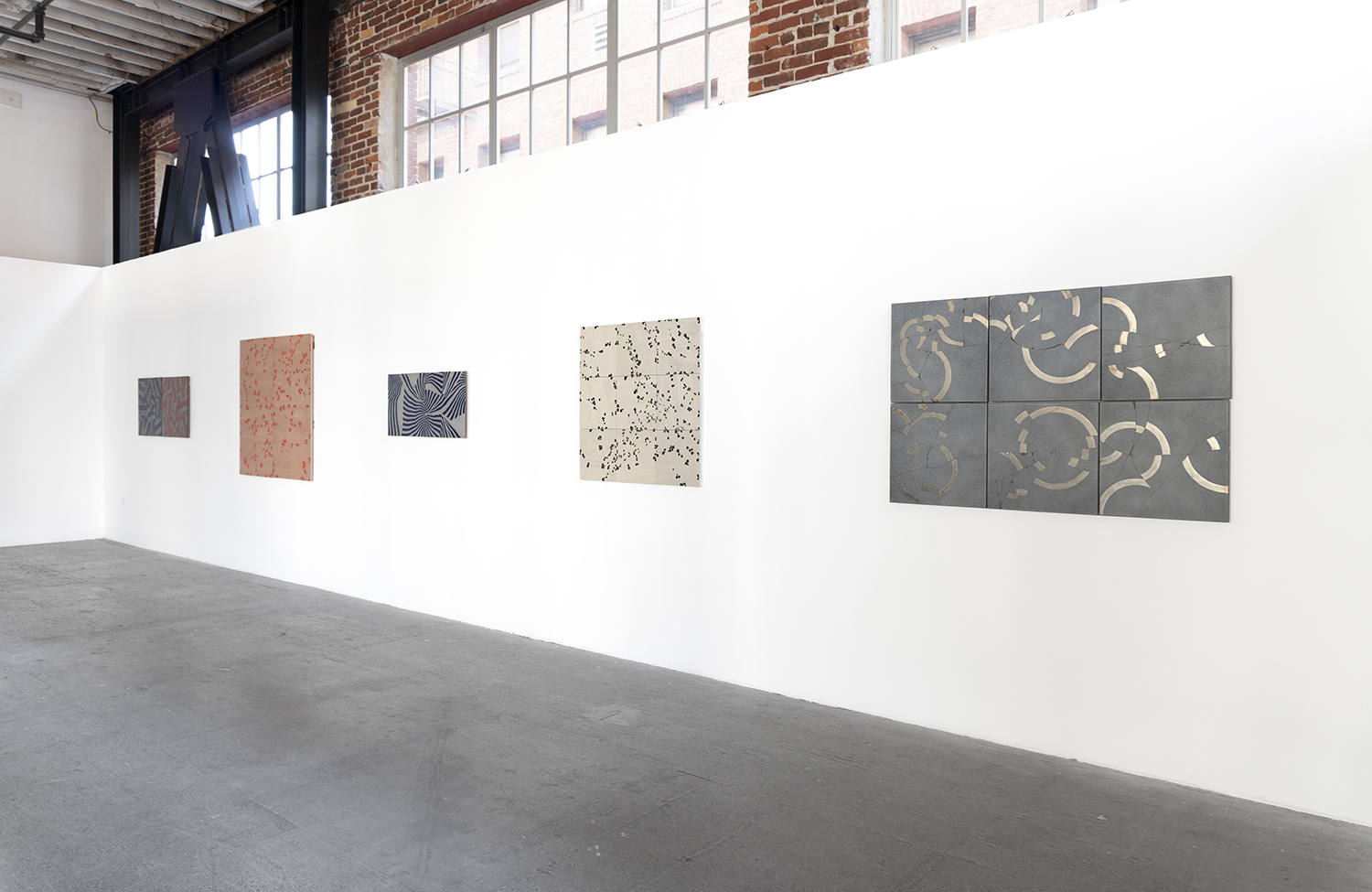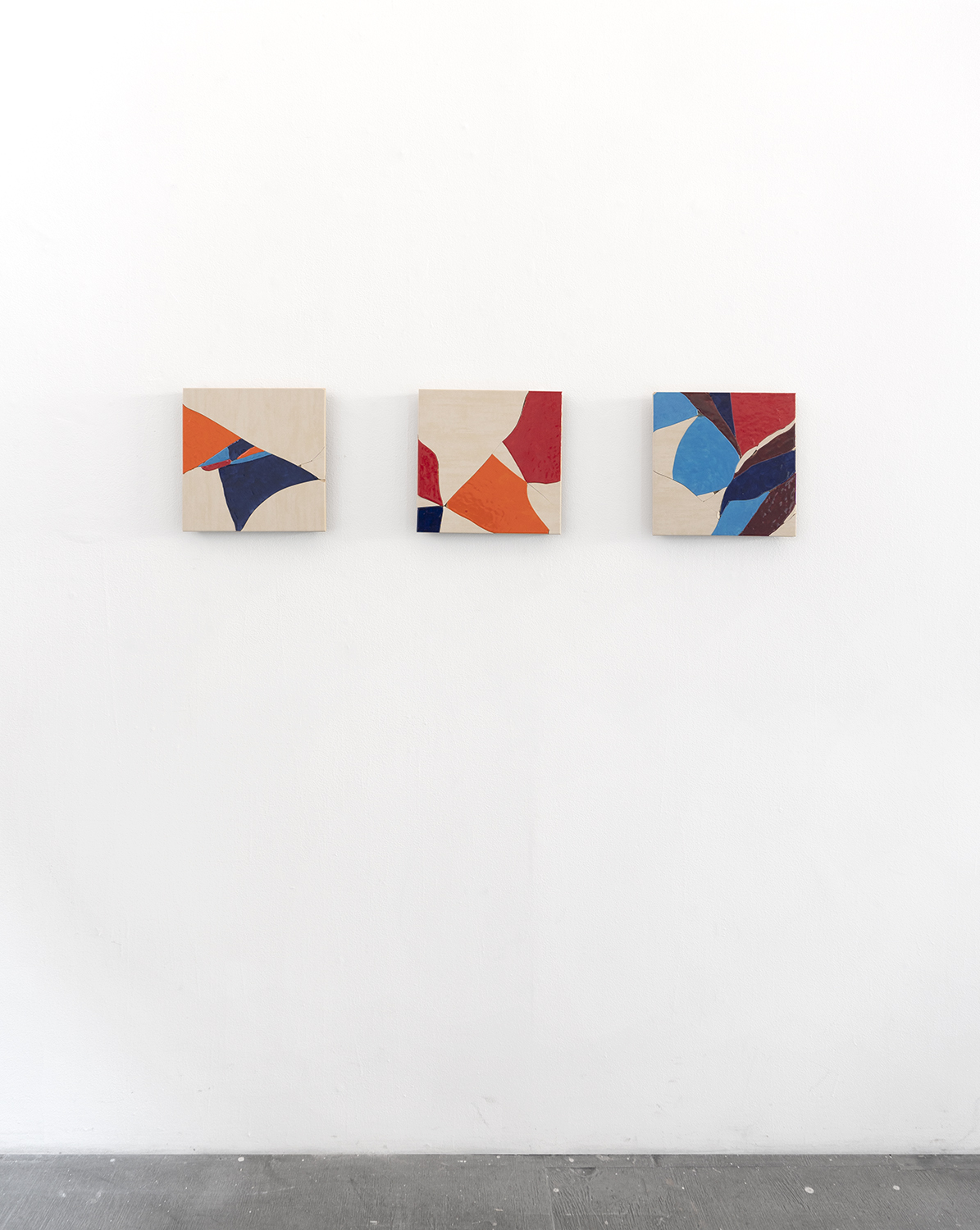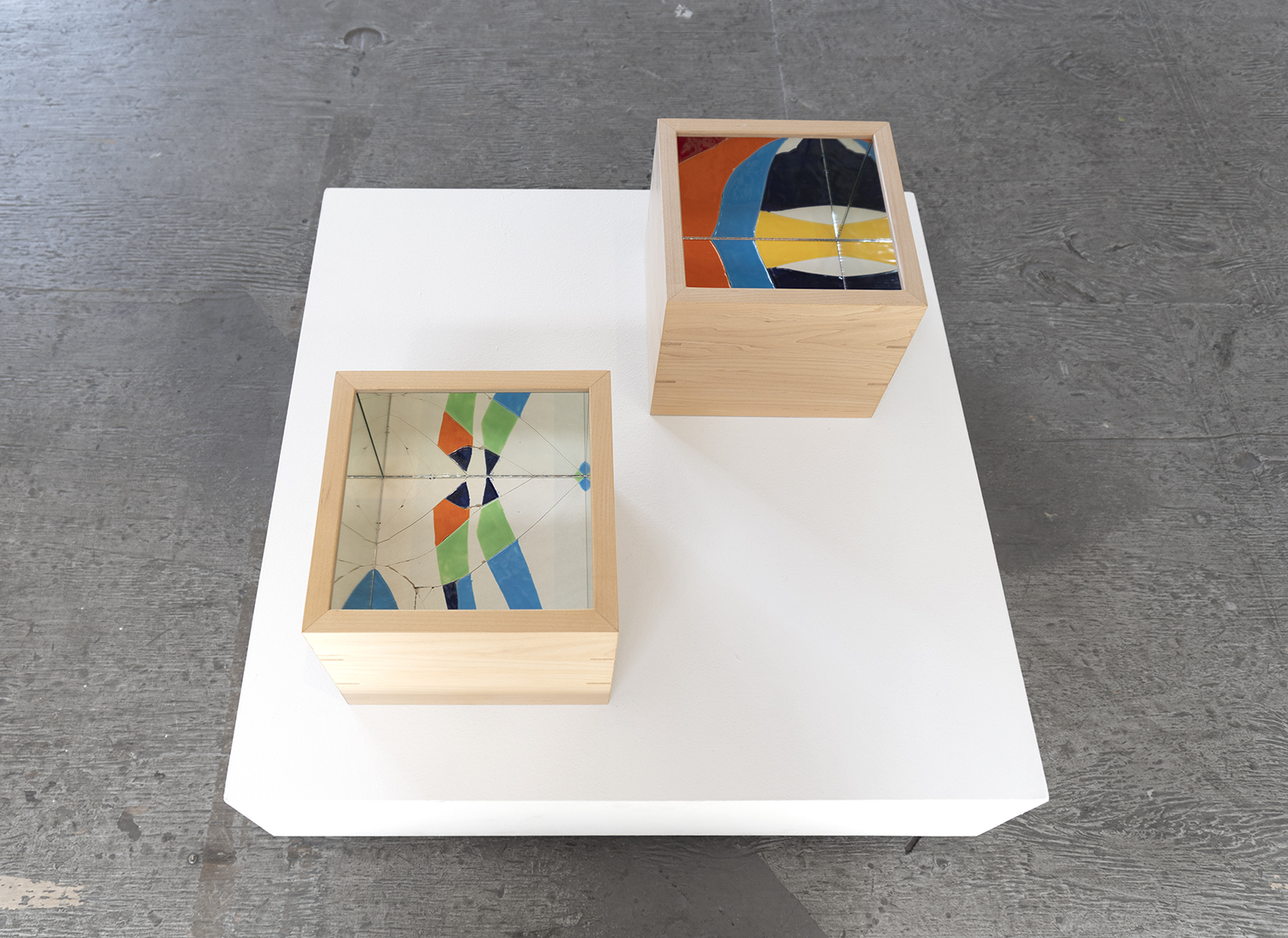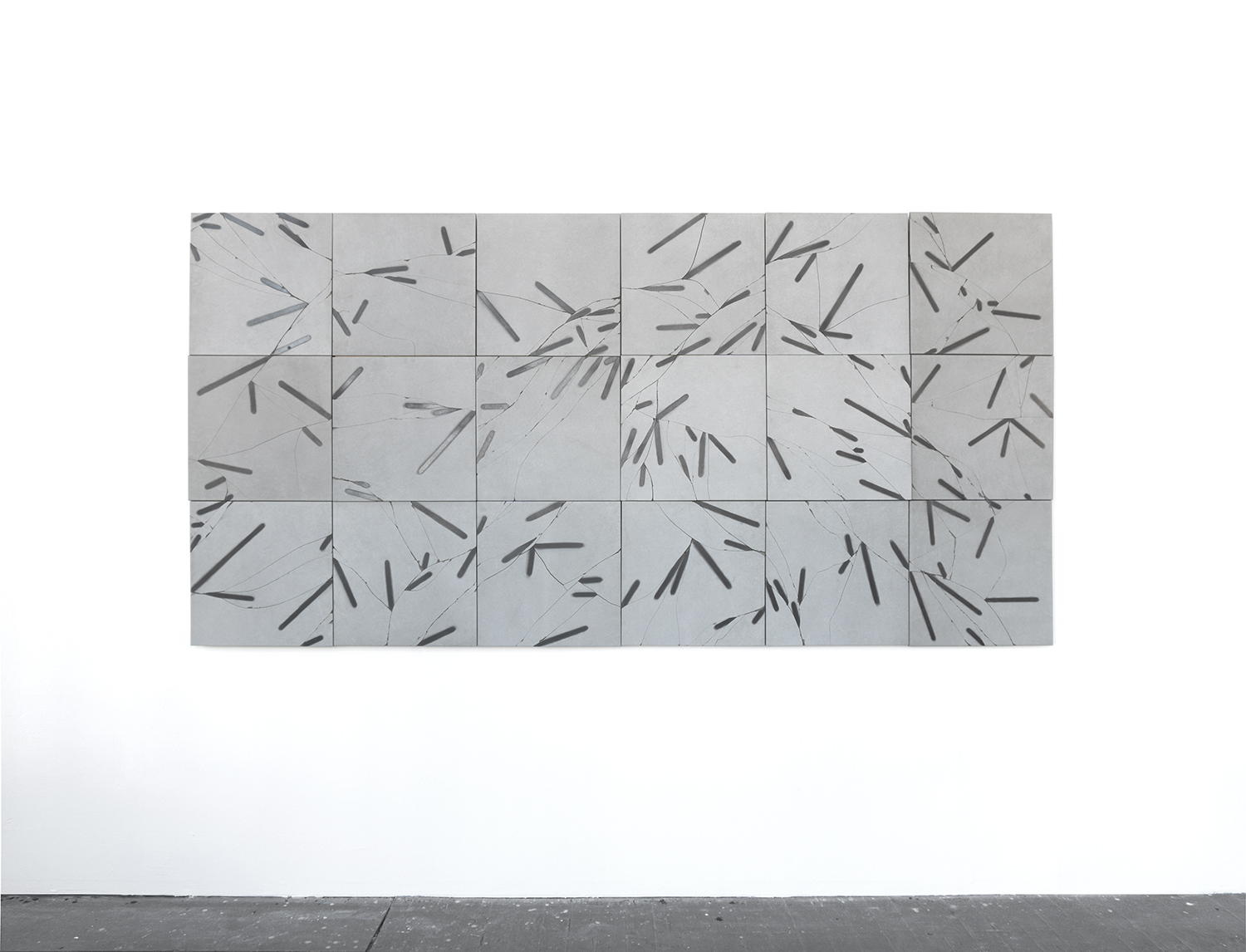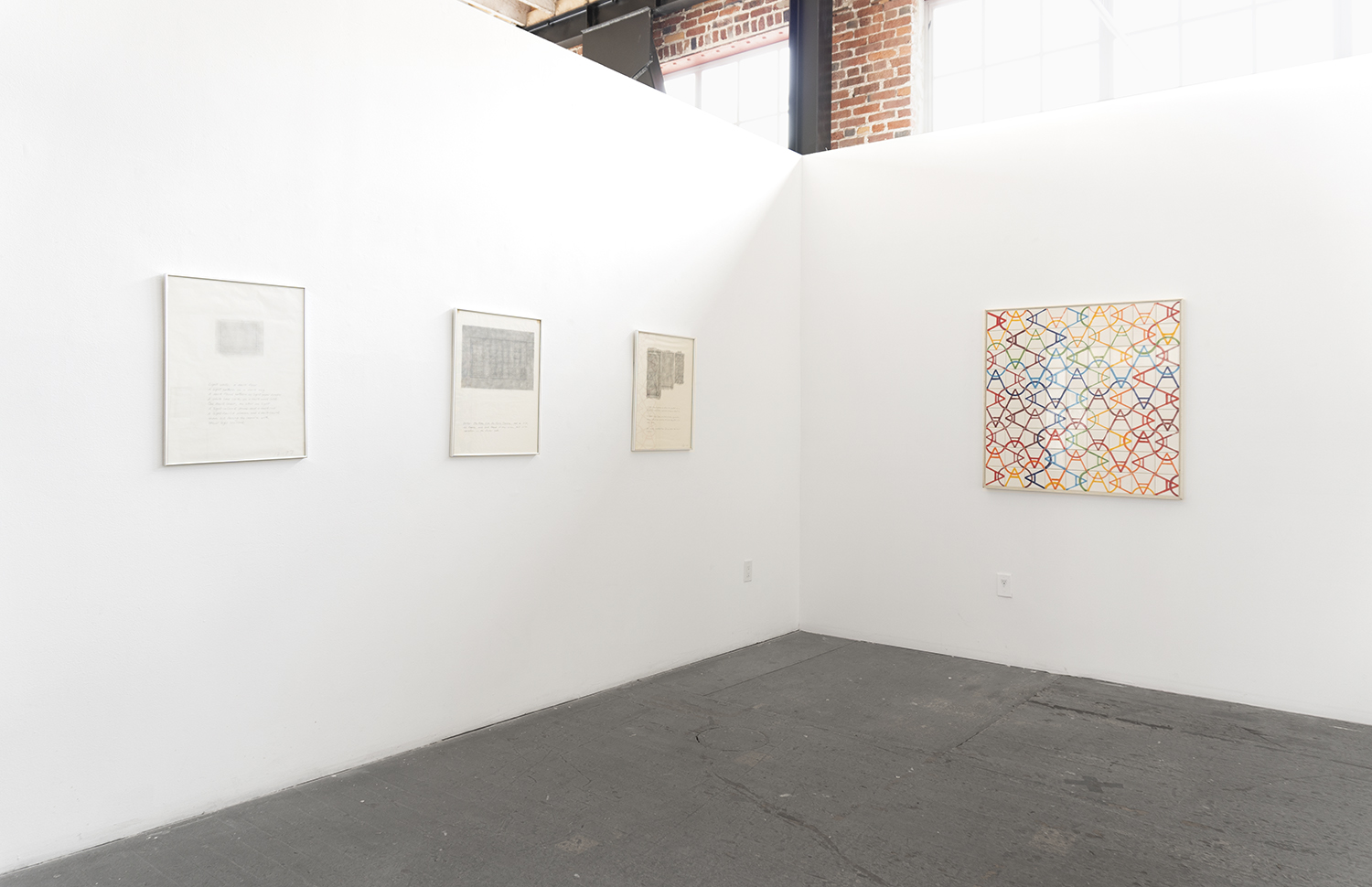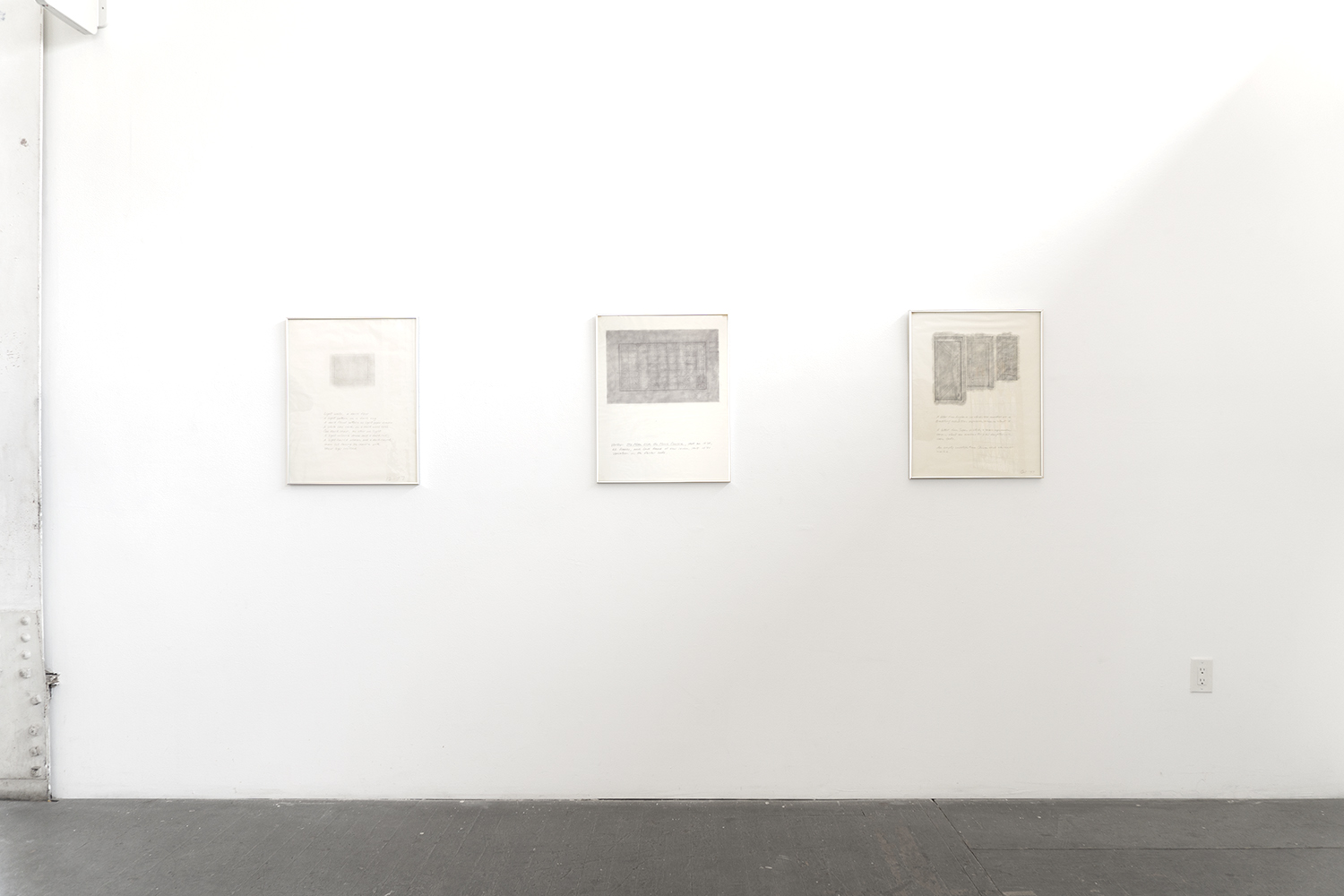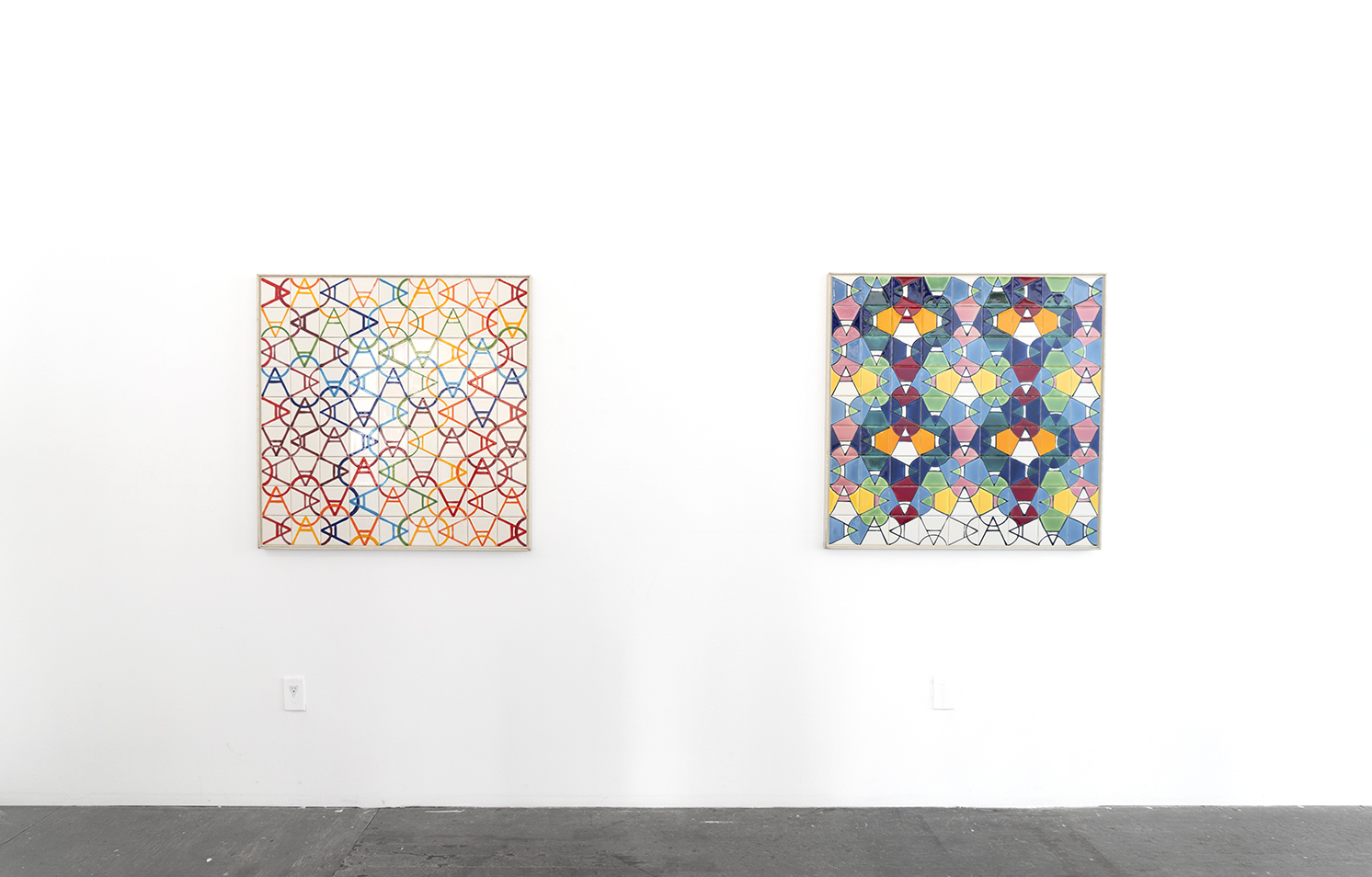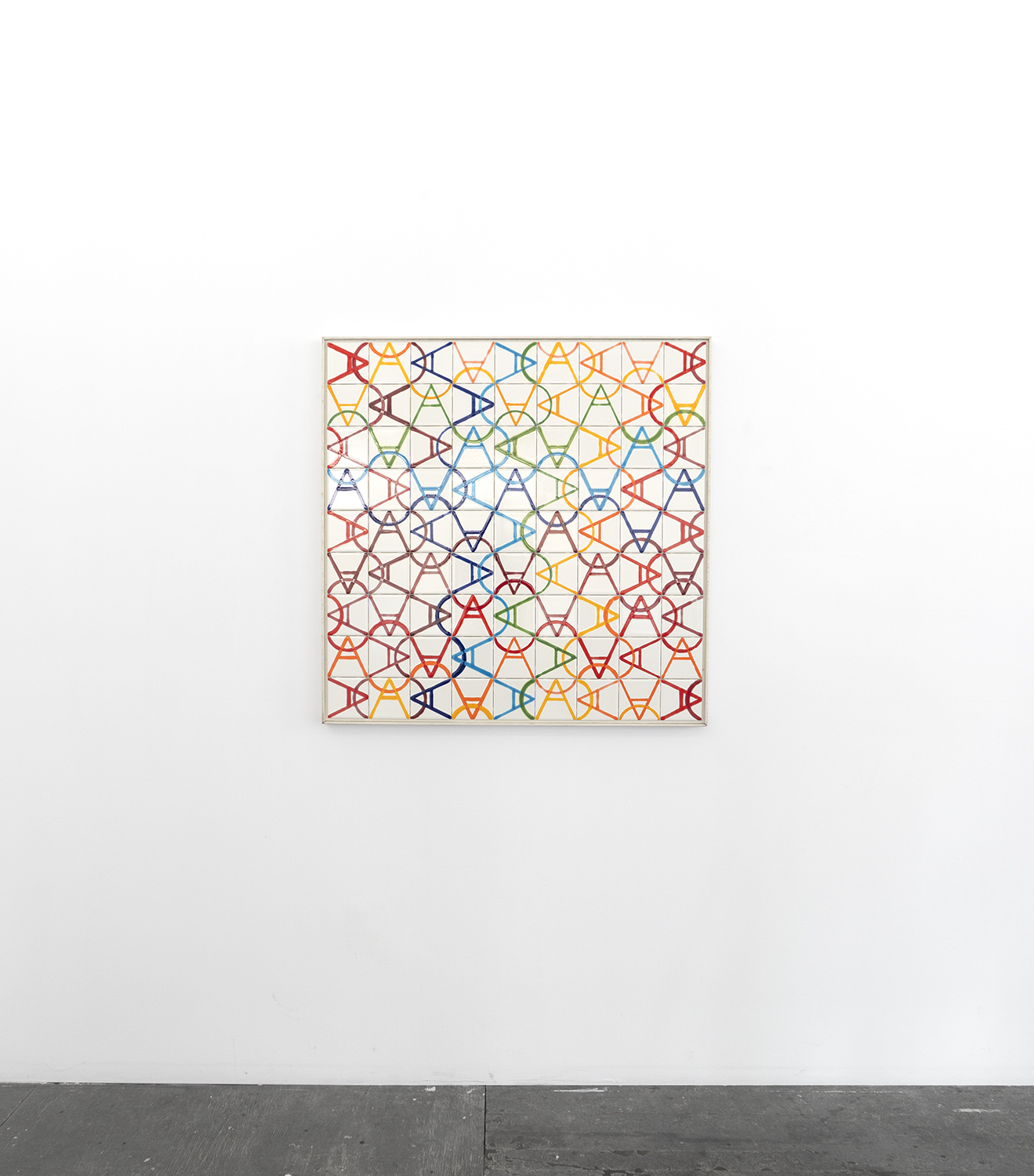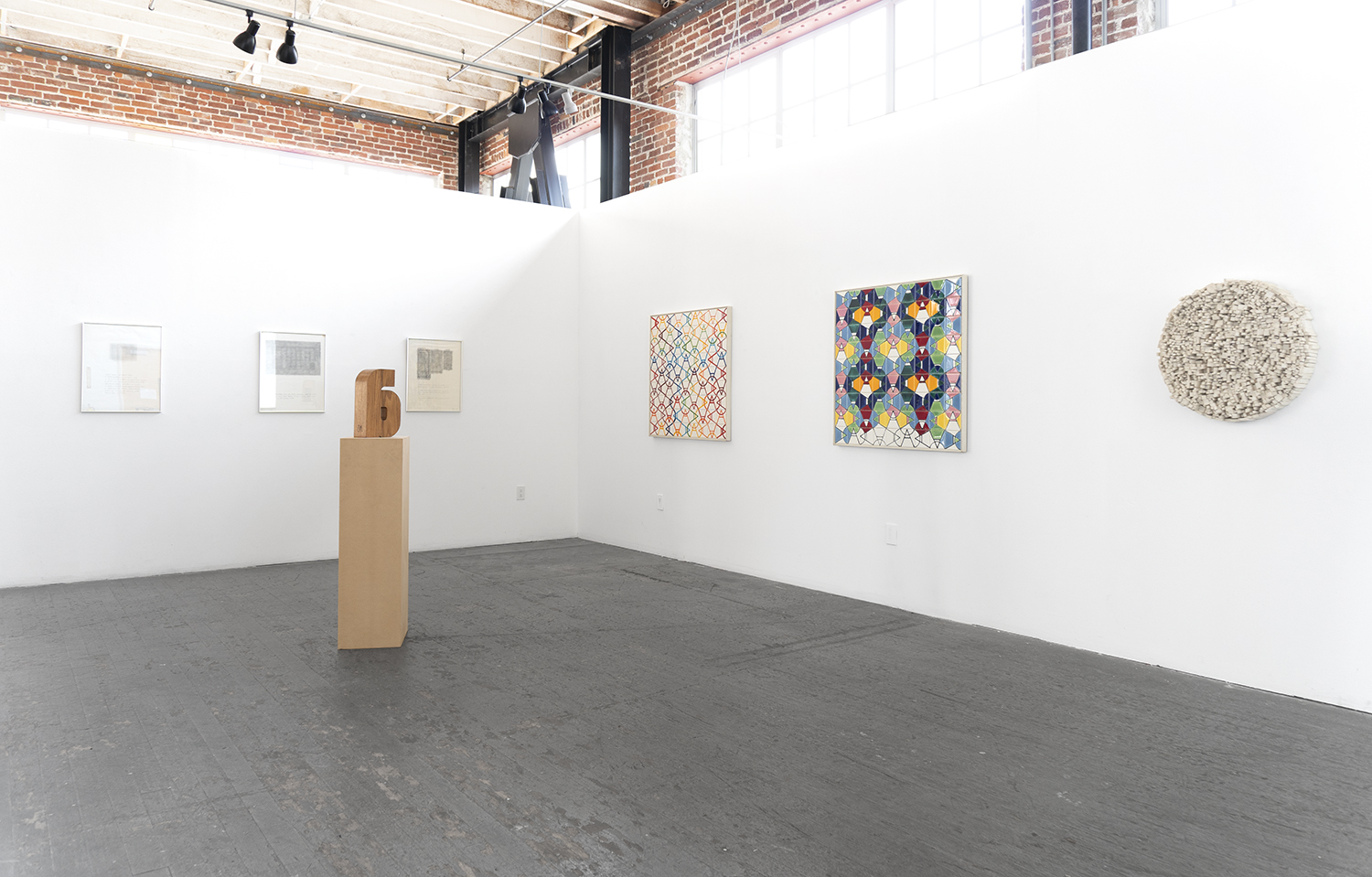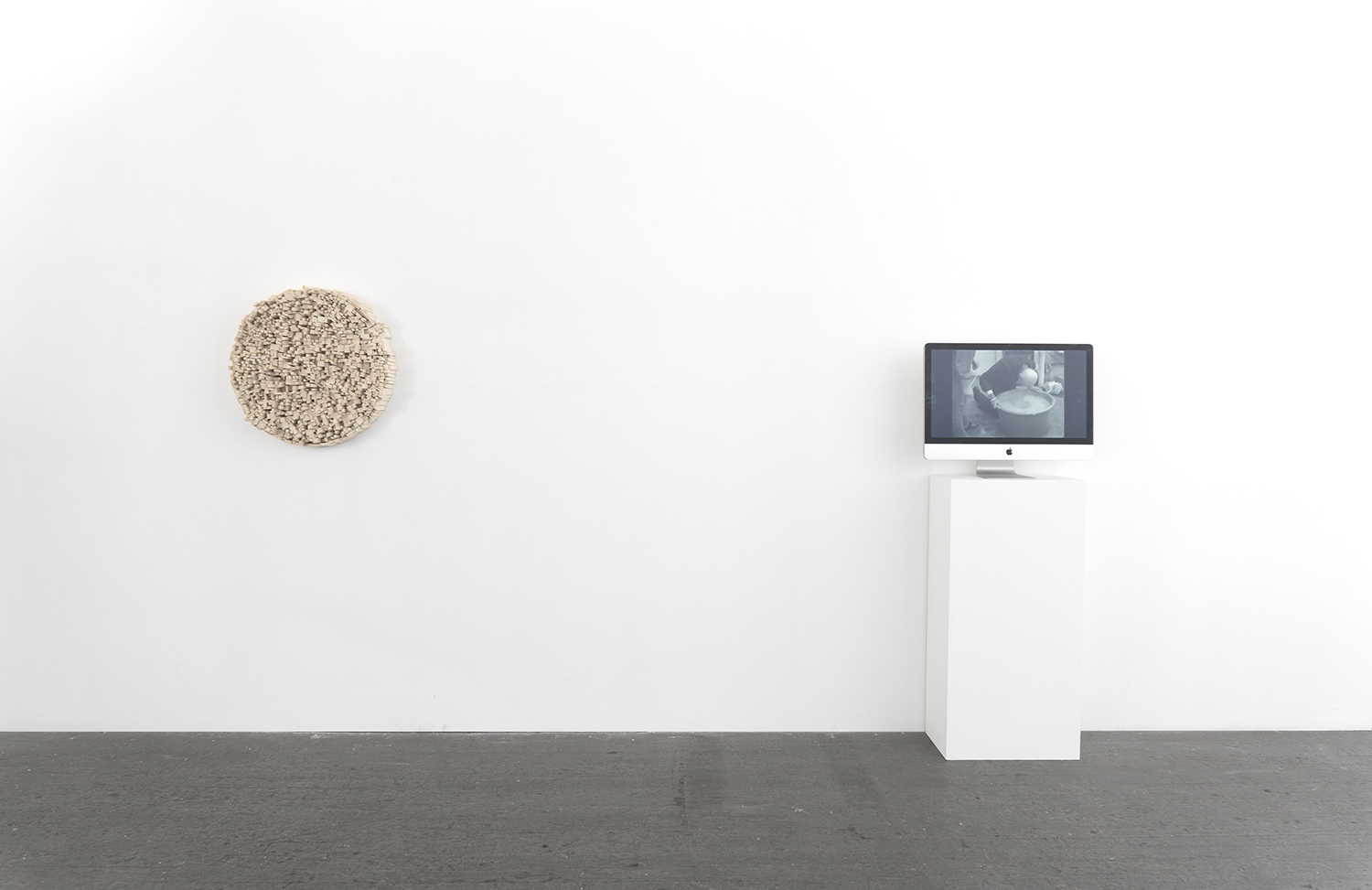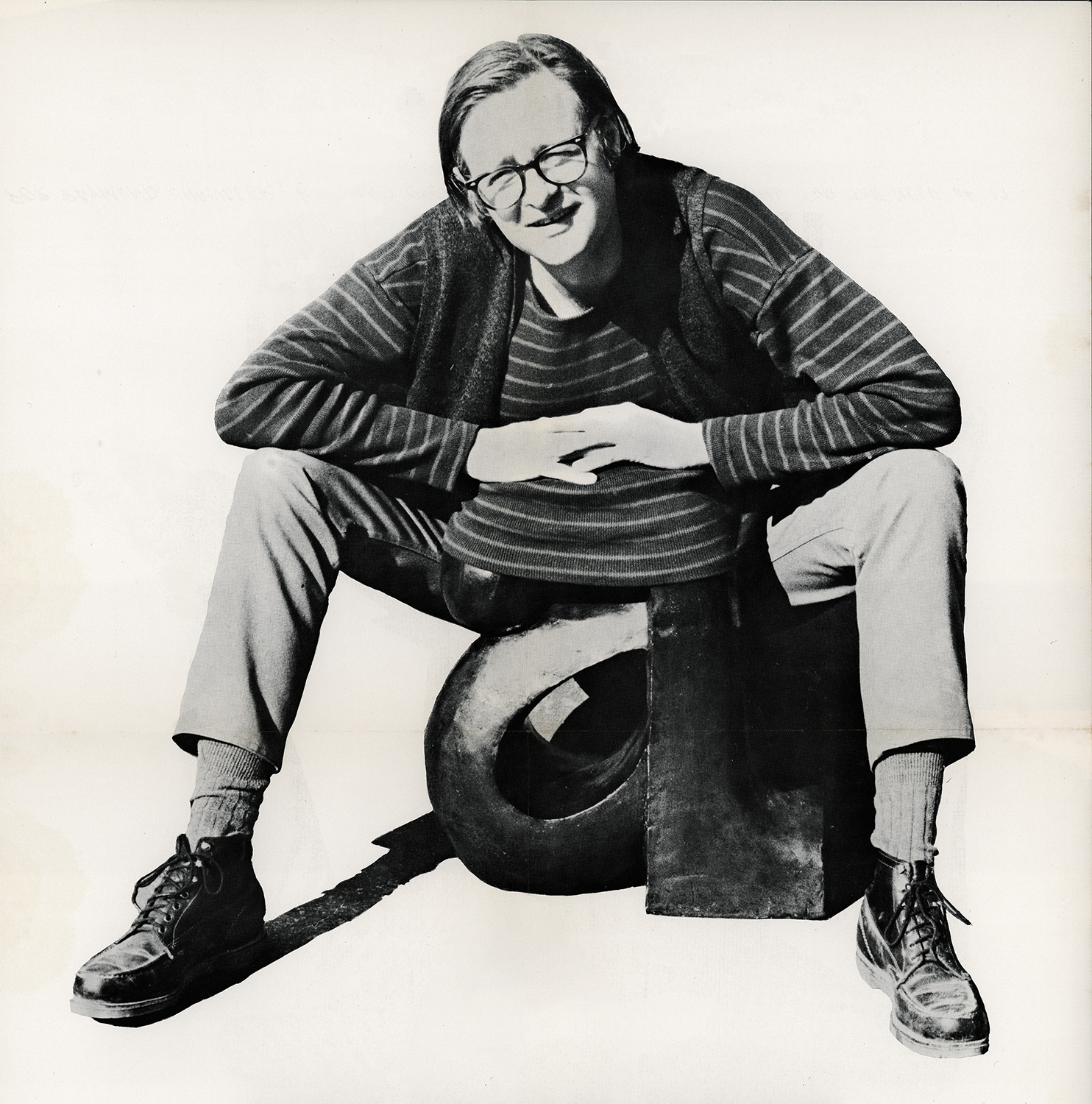RETHINK, REVISIT, REASSESS, REENTER
Install Images
Selected Works
Press Release
About
"I like words that start with re: rethink, revisit, reassess, reenter.
I think that’s how our minds work—we keep circling the same issues,
but with increasing clarity and depth."
- Jim Melchert
Jim Melchert’s work of the past thirty years can be described, at once accurately and poetically, as a transcendent exploration of mending. Using commercially-manufactured floor tile as his primary material, Melchert engages in deliberate breakage and consequent, system-based repair and elaboration.
Still, these words hardly seem to do justice to the elegant permutations and combinations of color and line that spread across Melchert’s compositions of reassembled shards. In pieces that range in size from a single twelve-inch square to dozens of them combined together in a vast mural, he systematically follows lines of fracture with planned actions. These include, but are not limited to, painting lines of glaze—single marks or repeated bands that echo across the reassembled surface; marking the surface with dots that map sharp bumps or hidden corners along the tiles’ edges, invisible to observers; drawing or painting circles that form a grid, or are scattered across a surface like a handful of tossed marbles, and linear gestures that echo the broken shapes themselves. In a recent series titled Vertices for Dancing, for example, small bi colored orbs spill across the spidery cracks, seemingly engaged in some complicated fandango. Most of these pre-ordained actions take place in relation to the pointed end of the largest broken pieces. This is the spot where, as Melchert explains, the energy moving through the fired clay has found the weakest link, breaking the chained molecules-- much as soil and rocks separate along a fault line in an earthquake. Factory-made tiles may seem identical and uniform, but on a microscopic level they are as unique as snowflakes. Clay consists of a mass of tiny plates, their bonds stronger in some places than in others. Once fired, it breaks according to the specific distribution of these strengths and weaknesses.
Text by Maria Porges
Media





